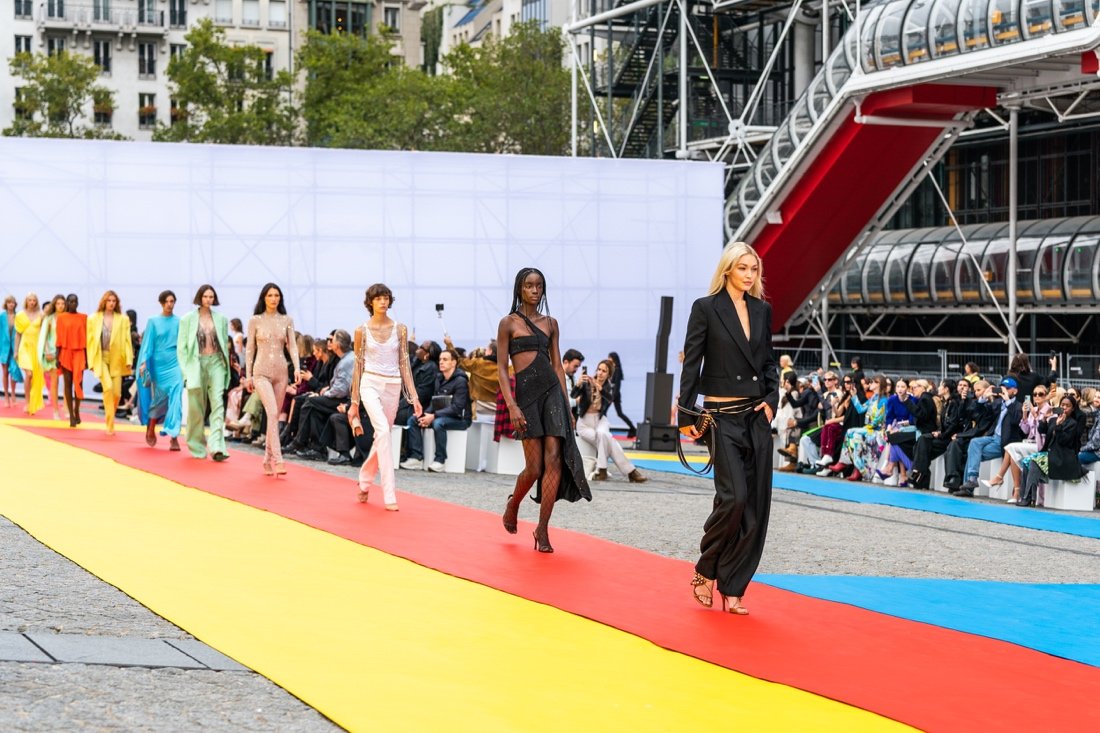Branding the Paris Art Museum, a Commentary on the Fashion Industry
By Josie Langdon Yates
Fashion week has always been hectic in the city of Paris, met with great suspense from all ends of the fashion industry. . Exhibiting a collection on the grounds of a monumental public museum is a curated publicity stunt, certified to gain countless attention from the most elite fashion magazines and cultural commentators, begging one to question further what we can expect for the future of fashion shows. Is the utilization of the museum a brief trend in the dynamic world of installing fashion shows? Or will it continue to be popular as an iconic form of showcasing designs?
Critics, designers, models, and photographers flood the metros hustling from one runway show to the next. The world watches as designers present their Spring 2023 collections during their curated défiléde mode, eager to see which brand establishes itself as the most innovative, fresh, and distinctive among the rest. Fashion Week is held in the four fashion capital cities of the world, including Milan, New York, and London. However, the reputation of Paris fashion week always seems to triumph, begging one to question how fashion brands utilize the city of Paris and its monumental museums for promotion. Nearing the end of this year's fashion week, Stella McCartney's runway show took place on the forecourt of Centre Pompidou in the fourth arrondissement of Paris. The collection is recognized as being the designer's most eco-responsible ready-to-wear line to date, with inspiration from the work of Japanese artist Yoshitomo Nara. The production design of the runway mirrored the primary colors, which aligned with the exterior piping of Centre Pompidou, a mix of red, blue, and yellow. There is a perpetual symbolism attached to the Paris art museum, and McCartney's collection was not the first to integrate such symbolism into its runway show.
So, what does the symbolic use of the museum communicate? Throughout the decades, French art institutions have played a significant role during Paris Fashion Week. Showcasing a collection in front of the Louvre pyramids or Centre Pompidou promotes an undeniable essence of success and the notion of "making it" as a designer. If today, a brand can utilize a governmentally run institution for the sake of self-promotion, imagine the amount of power the designer would have needed to achieve this before these institutions were readily available. Granted, this is a two-way street, and the Louvre easily profits from a Saint Laurent show on its doorstep. Nevertheless, a brand would need to gain prior notoriety and considerable media attention to be considered Louvre-worthy. Depending on who you talk to and their standing in the fashion industry, they will have mixed responses to referring to fashion shows as public events. Invitation lists tend to be greatly exclusive, and the portion of the population who is not a celebrity nor in the industry will scroll through images posted to media websites afterwards. Fascinatingly, McCartney's show breaks this line between the invited and the public–uniting the two audiences, while the public is the targeted audience for the fashion industry’s longevity in reality.
Fashion Marketing student at Richmond University London, Ryan Scott Lambright, believes the utilizations of the Paris museum will be forever evolving, "art and fashion have had a symbiotic relationship for centuries. Artists and fashion designers have garnered inspiration from each other's work, driving innovation in both fields. Additionally, both mediums are repositories of social history; I believe this is what makes museums an attractive venue for fashion shows and will continues to be a viable option for fashion houses to display their work in the future." Lambright considered the more fruitful meaning behind the utilization of museums in the fashion industry, the desire to maintain a reputation as an industry comprised of artists and craftsmanship. Exhibiting a runway show at an art museum is a reminder that fashion is an artwork. Therefore, fashion designers like McCartney can provide their runway shows with a sense of sociability, sustainability, and homage to the fashion industry as an artistic craft. Lambright further points to sustainability as a significant key factor in the art museum's popularity as a runway space, "(museums) can be seen as a more sustainable option for temporary event production considering the venue already exists." Engaging with Lambright's notion of suitability, it is probable that McCartney chose the Pompidou for this reason, considering that her show was comprised of eco-responsible garments and promoted suability in the fashion industry it would appropriate.


